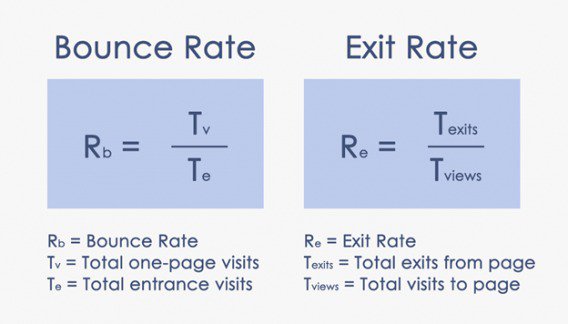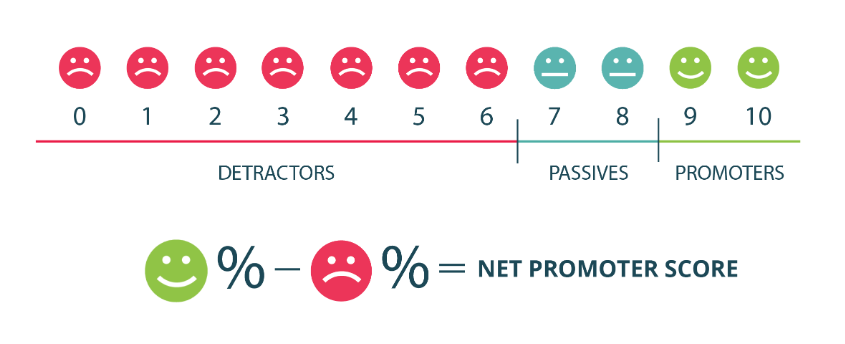3 ways to measure success: How to choose the right product marketing metrics

.png)

.png)
“If we don’t improve organic traffic and NPS scores, I will lose my job.”
When a client in product marketing said this to me, I was shocked. His boss had hired my team to design a new set of screens and value propositions in order to improve their site conversions.
You might think that losing your job over these numbers sounds crazy, but many organizations feel the way my client’s boss did. Organic traffic and NPS (Net Promoter Score) are regularly listed as top metrics for measuring product success. They’re up there with bounce rate, unique visitors, and average length of visit. But I don’t believe any of these are necessarily the best way to measure how successful a product is.
In this particular case, the client had a large amount of organic traffic already. That traffic wasn’t converting, which led me to believe the site was attracting the wrong people. And a site that doesn’t attract their target audience (no matter how popular) is not successful. That’s why a large part of our plan was to actually decrease organic traffic to their site.
With so much complexity, how do you measure product success? In this article we’ll explore 3 methods for gauging the results of your latest product.
You can’t measure product success without metrics. Without qualitative or quantitative numbers, it’s hard to see that a budget was well spent, that the project should continue, or that your assumptions were accurate!
But not all metrics are created equal. What’s more, the right metric for one product will be wrong for another. Selecting the best metric will depend in large part on your goals. For example, NPS measures how willing a customer is to recommend your product to someone else. So if your goal is to increase trust, or to improve relevancy and increase customer recommendations, then NPS is a great metric. But if your product is prescription-only, then recommendations aren’t the best way to recognize your product’s value.
The good news is, there is an appropriate metric for most every goal in product marketing. You don’t have to be an analytics guru (although it can’t hurt). Just because you don’t know the best metric doesn’t mean you can’t find it. Often, telling a team member about your goal will help them remember a metric they once used to track that very goal in a different context. Dedicated analytics teams, or development and content teams are particularly valuable for these conversations.
So instead of telling you exactly what metrics you should be tracking, let’s talk about different product goals—the questions you want answered—and their associated metrics, plus how to know if certain metrics are right for your product, and what to do with the information once you have it. Without further ado…
Here’s what to do if you’re asking yourself:
One great way to measure success is to find out if your target audience knows your product exists. Too many organizations assume a mindset of “if we build it, they will come,” but this just isn’t true. Plus, this question is related to just about every other problem you might have. For example:
Thus, your first step toward product success is to make sure the right people know about your product.
The goal is to have a large percentage of initial visitors (organic traffic) return. That typically implies that the organic traffic is your target audience, and they’re returning out of interest.
If you are actively marketing the product to your audience, then you also want to have a larger percentage of referral traffic than organic traffic. This would mean that people are clicking on the links that bring them to your product.
This goal breaks down into several metrics:
Goal: less than 50% of (unpaid) traffic
Goal: more than 50% of traffic. Exact number will depend on the size of your target audience
Goal: aim for 25-50% return visitors
If the people visiting are indeed your target audience, a large percentage will want to return. If most of your visitors are new (not returning), then your SEO may be too broad and attracting people who are not interested in your product.
Goal: exact number will depend on the size of your target audience

In addition to metrics, an on-site survey can help gather quantitative feedback. Ask about the relevance of your product, and how people found the site. Qualitative information is always a valuable addition to quantitative knowledge.
I love stories of products that evolved over time, based on consumer use. Take Skin So Soft, developed as a skin care product but frequently used as a bug spray. These days, Avon even markets a version as a bug guard.
That said, the goal is rarely to build a product and then wait to see how people use it. You want people to use your product for its intended purpose. Answering the question “do people use our product to reach their goals” will let you know if your build was successful.
First, this means your organization must have an idea of how the product should be used. Ideally, that idea has been supplemented with user research, which means you have assumptions in place about how people will use your product to achieve their goals.
To measure this goal, you’re looking for a few things:
Most analytics tools now allow you to track a flow. In other words, you can make some assumptions about the path a user will take to get from your homepage to purchasing your product (or from any other page to any other completed task) and then track the success of those flows with a combination of metrics.
Here are some metrics to help you determine how people are using your product:
Goal: low on pages that begin a user flow.
For other pages—such as pages that don’t have conversion opportunities, or pages intended to build awareness for first-time visitors—a high bounce rate is not a problem. Remember: A bounce is when someone lands on a page, and leaves from that same page without viewing other pages or taking action. This is not a bad thing, if the goal of that page is for someone to read it and leave—an FAQ page, for example.The bounce rate may be high because someone found it through Google, got the information they needed, and moved on.

Goal: low on pages throughout the user flow.
The exit rate shows that someone left the site from that page. You want a high exit rate on pages or steps that complete a task (such as finding a key piece of information, submitting a form, or making a purchase), and a low exit rate on pages that are part-way through a flow, since an exit at that point implies that your target audience lost interest or gave up.

Goal: high (this one should be an obvious one!)
The catch here is that you need to identify what a conversion means for your business. Are you tagging form completion as a conversion? Or purchase? Or both?
Goal: high completion rates, as noted above.
Google Analytics uses this term. Other analytics programs use similar terms to describe equivalent metrics.
The most important advice I can offer surrounding this set of metrics is to use the information you gather. Let’s say that the exit rate is quite high on a page that should be converting people. With that knowledge, you can update the page content to test different calls to action, different imagery, even different options for how someone might convert.
Metrics aren’t meant to be collected into a report. They are meant to be learned from and used to improve your product.
Lastly, you can measure the success of a product by whether or not your audience is not only using it, but recommending it to other target audiences. As Neil Patel says: “Great content is content that delivers value.” The same goes for products. They are only great (e.g. successful!) if they deliver value.
The rationale is fairly straightforward, so I’ll jump into the metrics.
Metrics for product recommendations include:
Goal: ideally over 20%.
Direct traffic means someone typed your URL directly into their browser, which implies that someone told them to check out your site or product.
Goal: depends on how active your audience is on social media
If your audience is not on social media, the numbers will likely stay low. But if your audience is on social media (of any sort), you will want them to spread the word about your product and/or company. You can encourage this by requesting testimonials or engaging them on their platform of choice—but that’s a whole other strategy to discuss another day.
Goal: 90-100
The NPS measures how likely someone is to recommend your brand or product. If you’re using NPS, I highly recommend conducting desirability testing or user interviews to understand why someone likes or dislikes your brand or product. This is a situation where the quantitative data is much more value with some qualitative data added to it.

Again, the key to these metrics is using them. If your NPS is low, find out why. And then act on that information. If direct traffic is low, update your product to encourage people to share the product with their friends and family.
There is always a related action to take based on what your metrics tell you.
These are far from the only possible metrics. After all, whether or not your product is successful really depends on what you’re trying to achieve. Still, if you measure nothing else, make sure you identify (1) whether your audience is aware of your product, (2) whether they’re able to accomplish their goals, and (3) whether they would recommend the product to others.
I’m not pretending these are easy measurements to put in place. They require looking at multiple metrics, and interpreting them. Projects like this take time, resources, and buy-in, which can be difficult to acquire. You’ll need to help your colleagues—possibly across silo’d teams — understand the value of measuring goals over abstract measurements.
But with these measurements, you’ll be able to assess the value of your product. And isn’t that worth the work?
For more on metrics and measurements, check out: